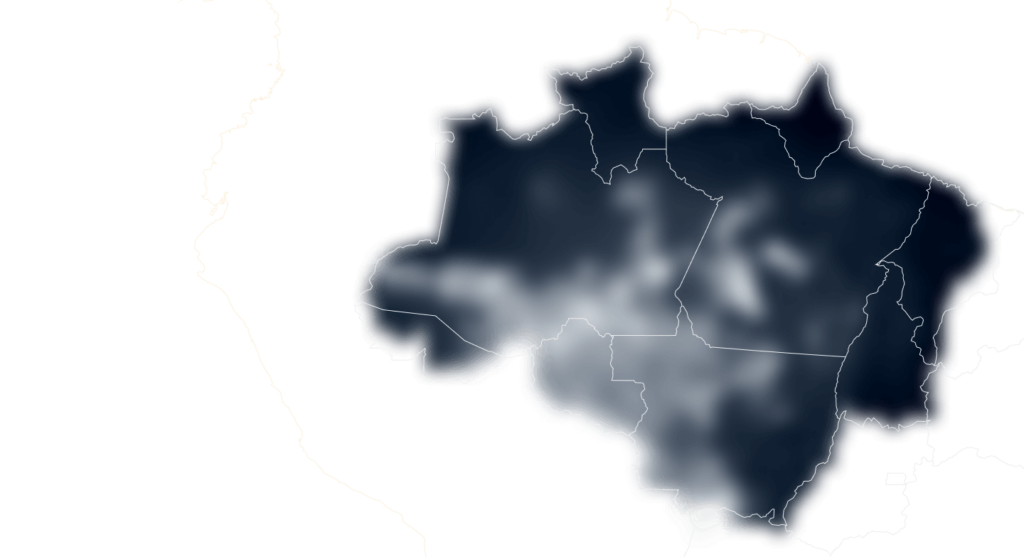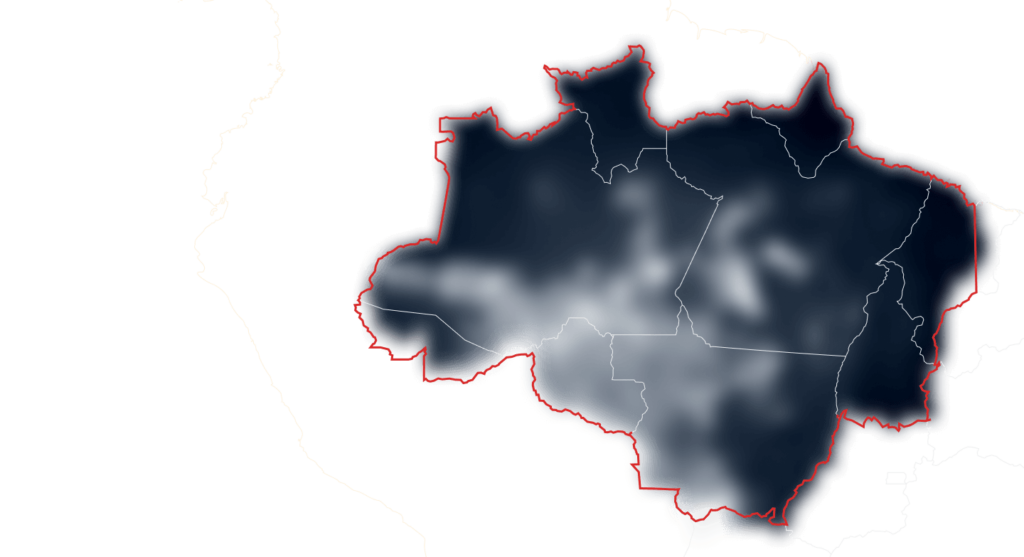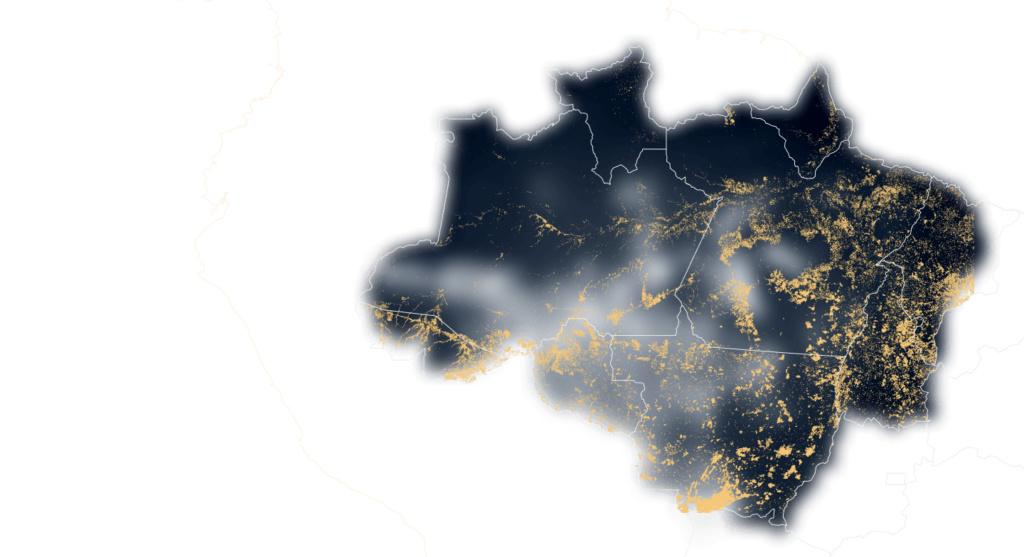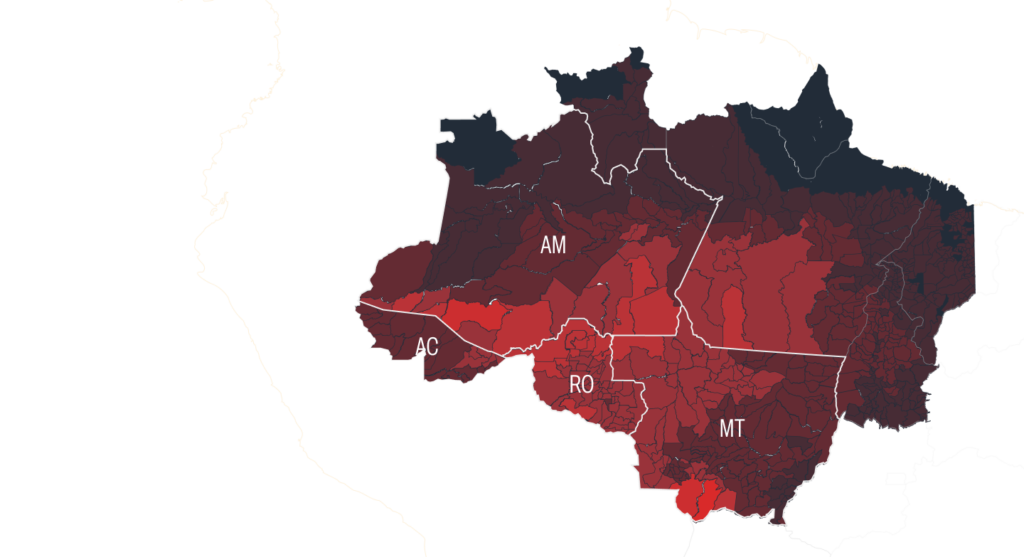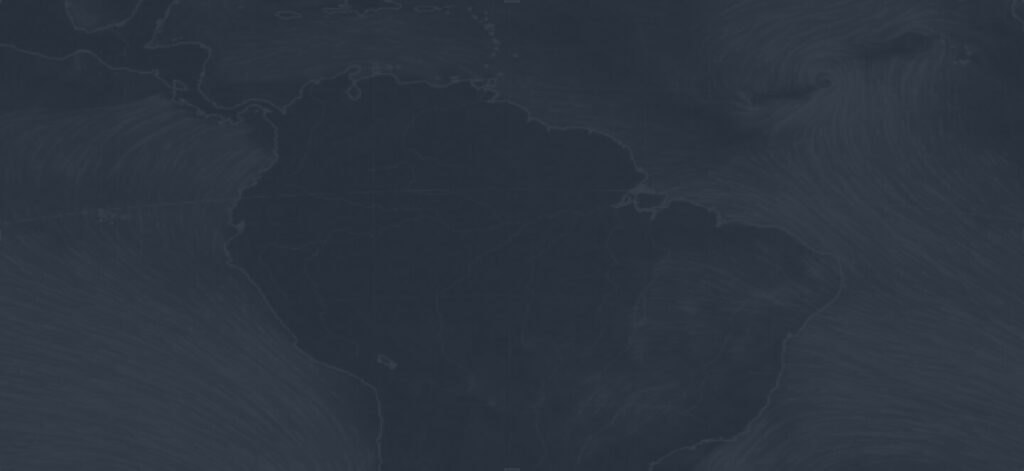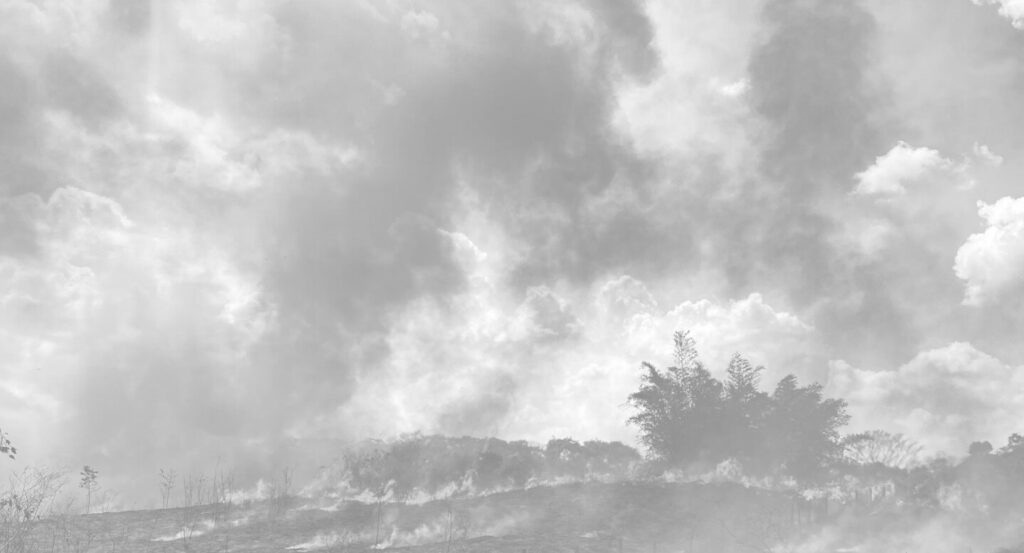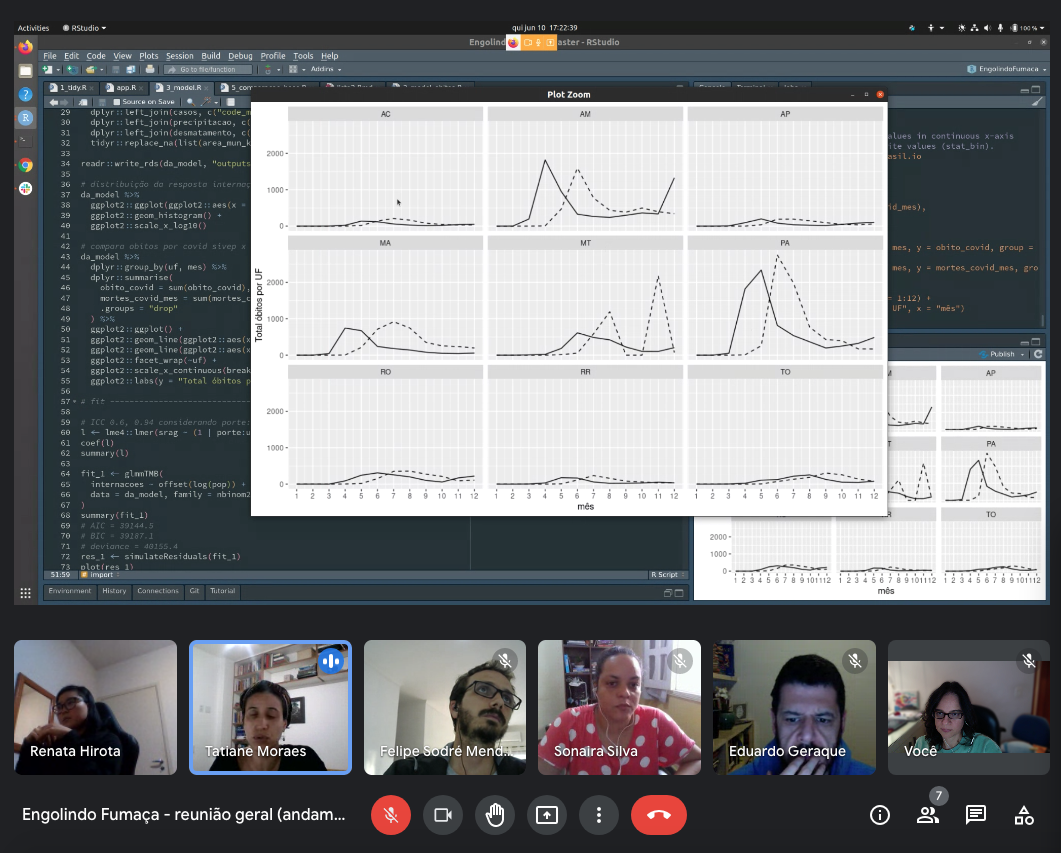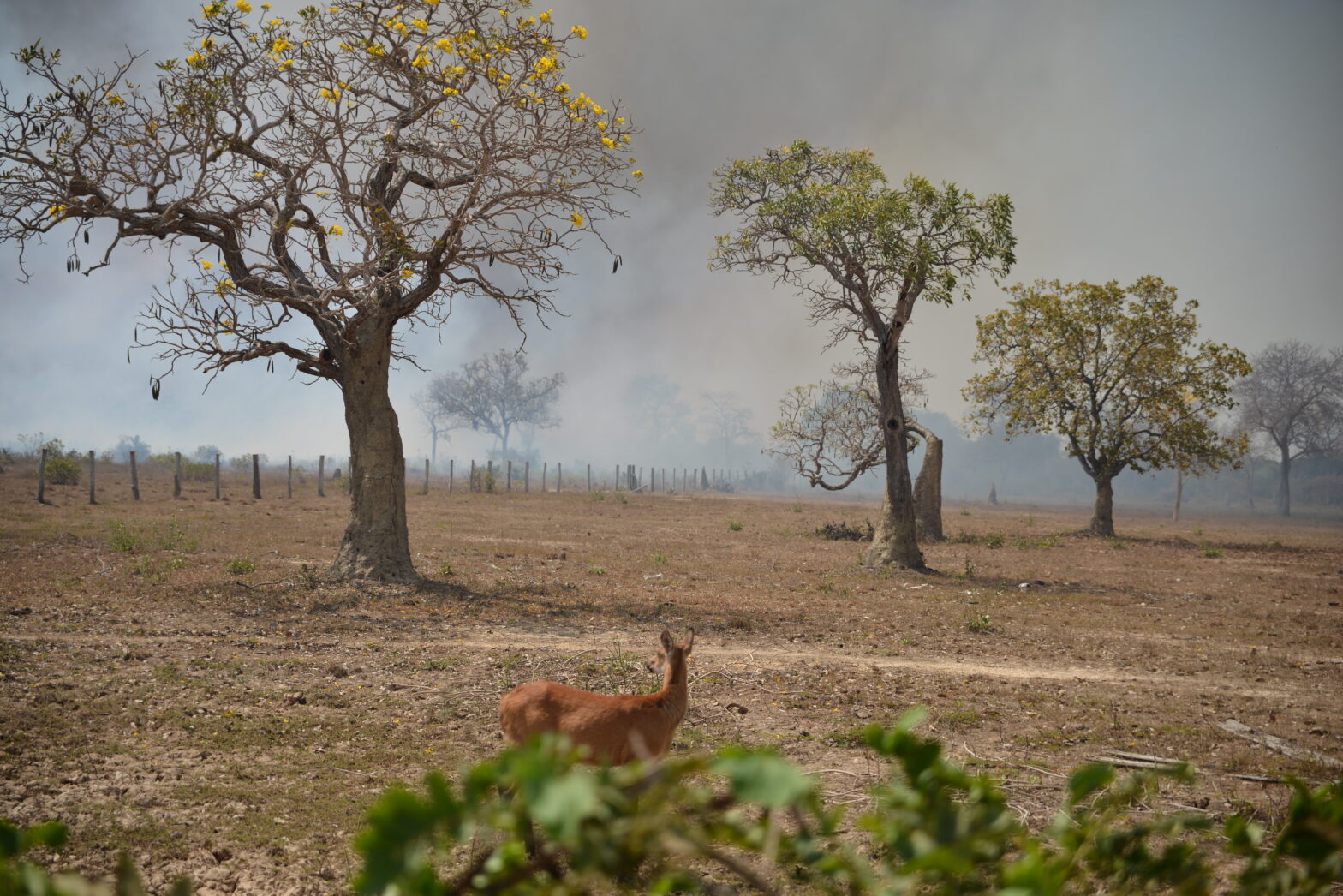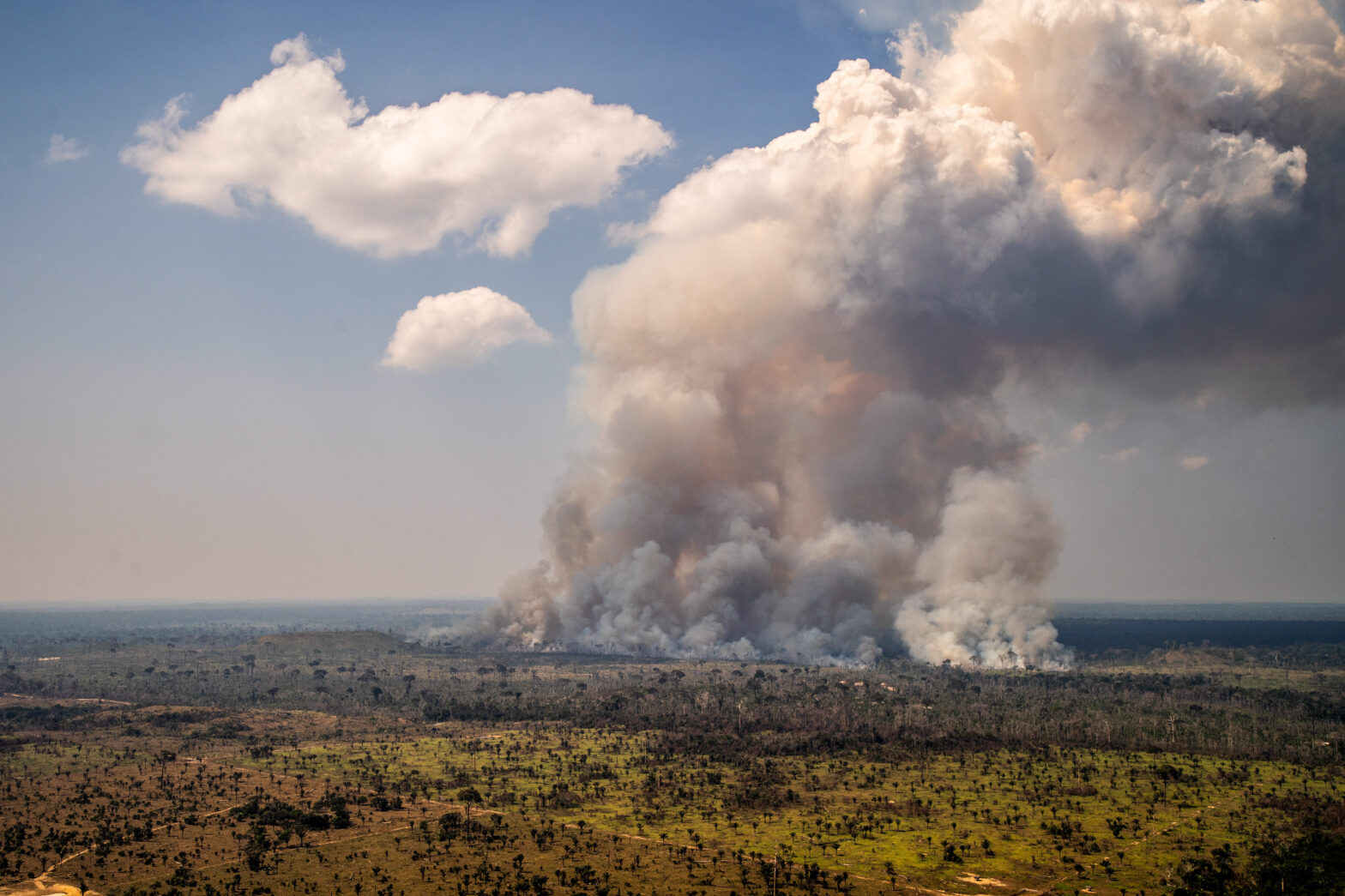Smoke from burnings worsens Covid-19 in the Amazon
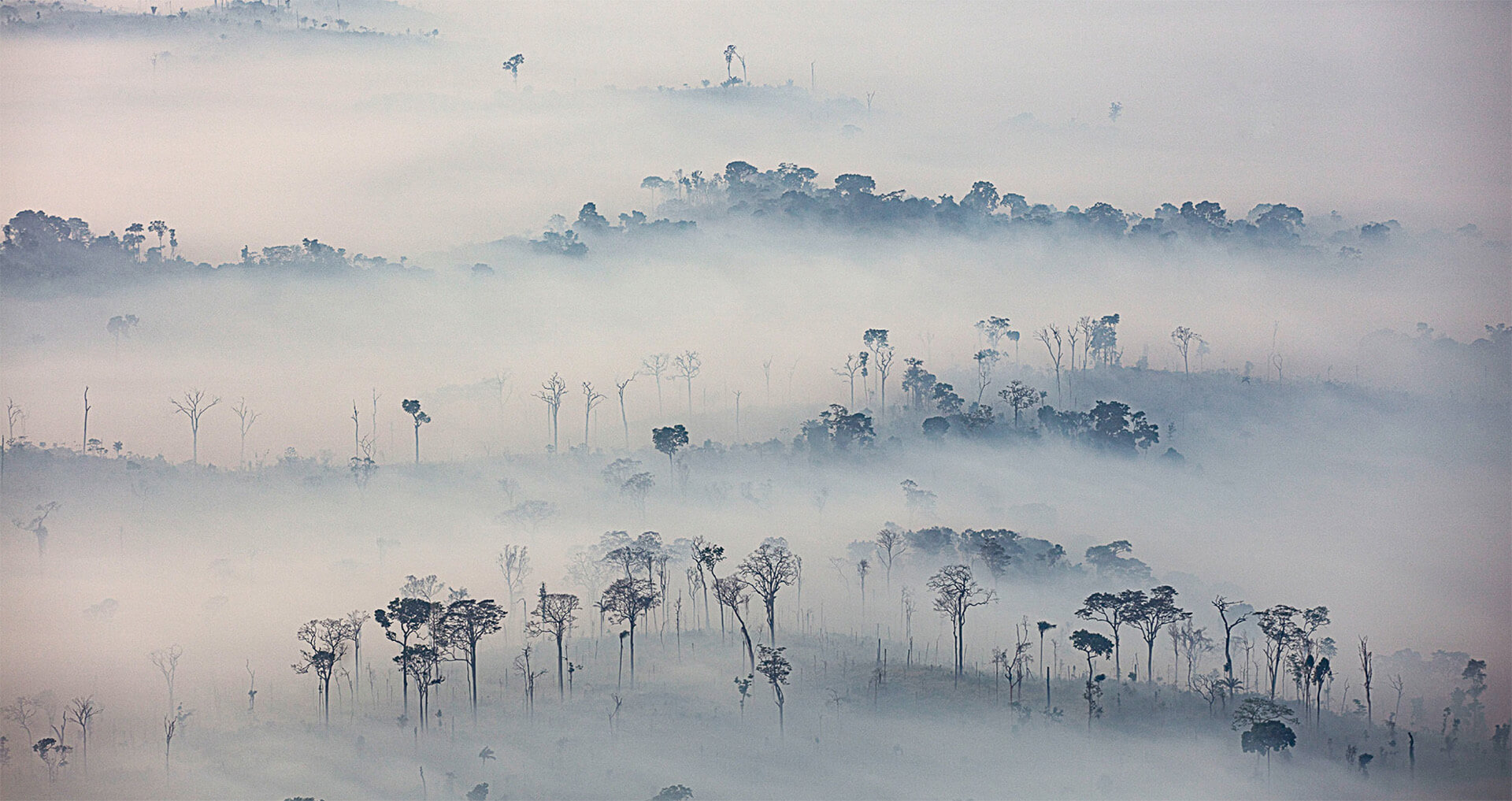
Smoke in the Tapajós National Forest, Amazon region of Pará state, September 2020
Photo: Marizilda Cruppe / Amazônia Real
In 2020 residents of regions affected by fire used to clear the Amazon forest were more exposed to the risk of worsening Covid-19. This toxic synergy between burning and infection by the new coronavirus is the subject of a unique analysis carried out over five months by a multidisciplinary team of journalists, geographers and statisticians from InfoAmazonia, in partnership with researchers from LabGama of the Federal University of Acre and from the Oswaldo Cruz Foundation (Fiocruz). The project was supported by Stanford University, through the Big Local News program, which aims to make data available in formats that can be reproduced by journalists around the world.
Last year, at the height of the burning season, breathing, particularly in municipalities in the states of Rondônia, Mato Grosso, Acre and Amazonas, became more dangerous because of two enemies invisible to the human eye: the pandemic virus and fine particulate matter, a microscopic pollutant that affects the lungs.
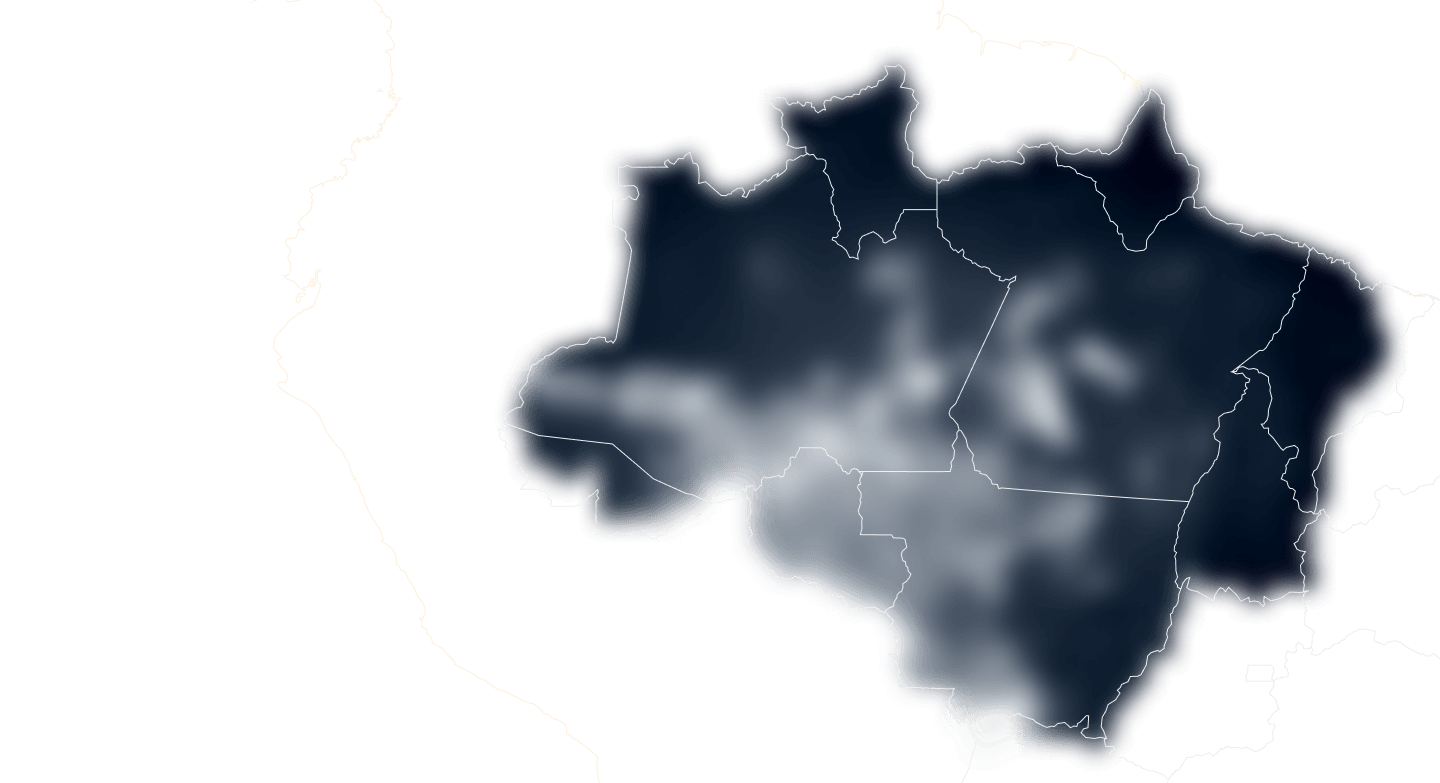
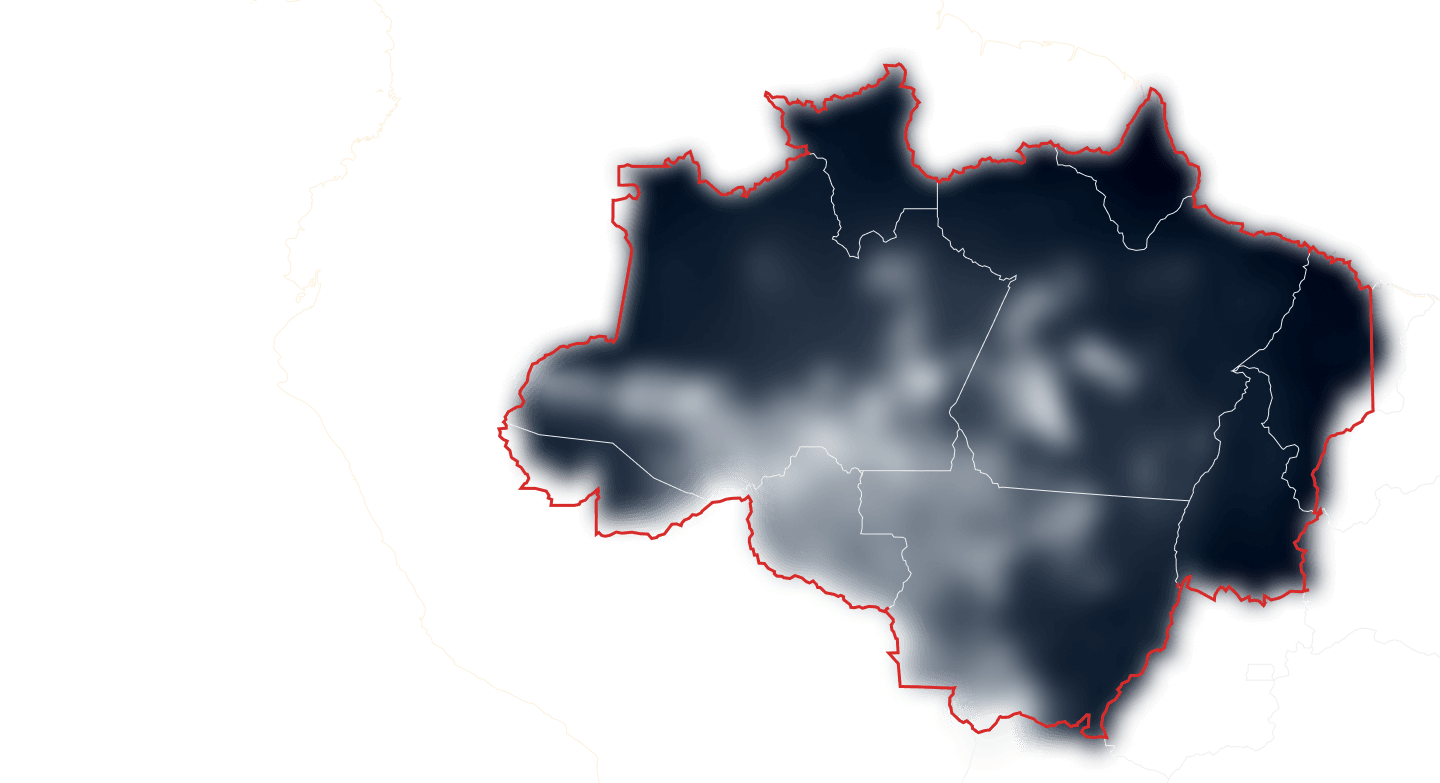
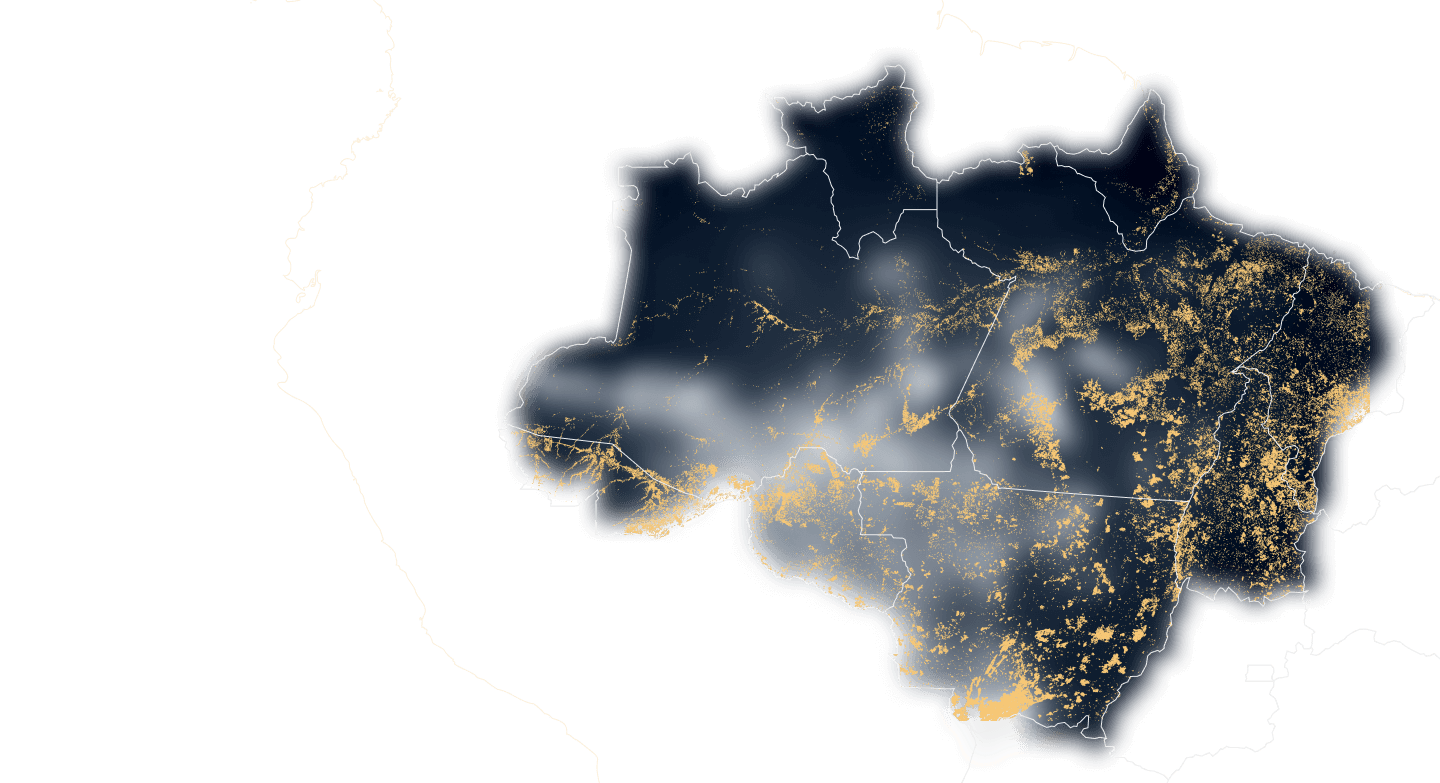

1.
Smoke seen from space
Satellites detect atmospheric pollution and allow calculation of the concentration of its different components. In addition to the carbon which drives global warming, the immense quantities of smoke emitted by fires release pollutants with direct impacts on health.
Source: average particulate matter (PM 2.5) from July to October 2020 – CAMS/InfoAmazonia2.
legal amazON
In 2020, one of the most severe cycles of deforestation and burning of Brazil’s Legal Amazon region exposed its inhabitants to large quantities of pollutants toxic to human health, particulate matter PM 2.5.
3.
Toxic clouds carried on the wind
It is not always the case that the places in the Amazon with the most fire hotspots detected by satellite are those where air pollution is highest. Rain, relief and wind patterns play a role in determining how particulate matter circulates.
Source: fire hotspots detected by the S-NPP/VIIRS satellite from July to October 2020 – Inpe4.
Increase in hospitalizations
Breathing became more dangerous during the 2020 burning season, especially in municipalities in Rondônia, Mato Grosso, Acre and Amazonas. Its tragic combination with the pandemic left residents of regions affected by smoke more exposed to the risk of aggravated Covid-19.
Source: increase in numbers of hospitalizations categorized as Covid-19 between July and October 2020 – InfoAmazonia analysisThe data reveal how pollution arising from Amazon fires has a chronic perverse effect on the population, explained by the specific geography of fire [see the second report in this series]. The most affected municipalities, in several states, illustrate the expansion of the arc of deforestation. Cases such as those of student Robson Fadell, nursing assistant Regina Diogo and the municipal secretary of environment of Poconé, Danielle Carvalho, will be related in this series of reports.
Every year, the population of the Brazilian Amazon sees the landscape change because of the large amount of smoke that circulates during the burning season – from July to October, with its peak in August and September. Together with the visible smoke in the skies of the municipalities, very fine fragments, less than 2.5 µm in diameter, far smaller than the thickness of a hair, also provoke serious effects on everyone’s health. These tiny particles, imperceptible to the naked eye, can be detected by satellite optical systems from space.
In Amazonia, emissions of particulate matter are highest in the burning season
Each line represents a municipality in the Brazilian Legal Amazon region
DAILY AVERAGES of PM 2.5
Source: CAMS-NRT, InfoAmazonia analysis (see methodology)
For each day that the very fine grains of particulate matter remained suspended in the atmosphere above the level considered safe by the WHO (World Health Organization), the risk of a person infected by the new coronavirus being hospitalized increased by 2%. Smoke from the fires was linked to an 18% increase in severe cases of Covid (those which resulted in hospital admission) and a 24% increase in admissions for respiratory complaints in the five states with the most fires in the Amazon during the 2020 burnings (Amazonas, Acre, Rondônia, Mato Grosso and Pará).
Residents of Rondônia suffered the most. Throughout the burning season, the state recorded the largest increase in fire-related hospitalizations. In September, the worst month of the year, data show almost 26 days with high levels of pollution. The exclusive study by InfoAmazonia suggests that, as a result, the population experienced a 66% greater chance of being admitted to hospital due to Covid-19 complications. Over the same period, the air in the cities of Acre was saturated with particulate matter for an average 22 days a month, increasing the chances of hospitalization across the state by 54%. Residents of Poconé and Cáceres, for example, municipalities in Mato Grosso where the situation was most serious in September, were 82% more likely to be hospitalized that month for Covid-19 complications and 115% more likely when all respiratory complaints were taken into account [see the third report in this series]. During this same period, the air in these two locations was saturated with particulate matter for the entire 30 days of the month.
INCREASE IN HOSPITALIZATIONS
| INCREASE IN HOSPITALIZATIONS SRAG / COVID | STATE |
|---|---|
| RO | |
| MT | |
| AC | |
| AM | |
| TO | |
| PA | |
| MA | |
| RR | |
| AP | |
| RO | |
| AM | |
| AC | |
| MT | |
| PA | |
| TO | |
| RR | |
| MA | |
| AP | |
| RO | |
| AC | |
| MT | |
| AM | |
| TO | |
| PA | |
| RR | |
| MA | |
| AP |
Source: InfoAmazonia analysis (see methodology)
Data blackout
In order to tease out the story that reveals the relationship between fire, pollution and worsening levels of Covid-19, the multidisciplinary team had to overcome an important obstacle when dealing with the Amazon: the difficulty of obtaining regional data on air pollution. No Amazonian city has permanent monitoring stations. The region’s pollution was thus calculated using satellite information. Until 2019, the National Institute for Space Research (INPE) processed and made this data available for all Brazilian municipalities, but the federal institute stopped publishing the data last year.
“The pollution data were not available as of 2020. Therefore, the processing had to be done from satellite images” says Renata Hirota, data journalist on the InfoAmazonia team.
The pollution data were not available as of 2020. Therefore, the processing had to be done from satellite images.
RENATA HIROTA
Data journalist, InfoAmazonia team
Global estimates of the concentration of fine particulate matter (PM 2.5) are the result of a spatial model which processes information detected by satellites and meteorological stations. The system is provided by the Copernicus Atmosphere Monitoring Service (CAMS) of the European Centre for Medium-Range Weather Forecasts (ECMWF).
In order to calculate the worsening rates of Covid-19 cases, the analysis only considered cases resulting in hospitalization. The data, which come from the Severe Acute Respiratory Syndrome (SARS) database published by DataSus, are generated from hospital records of admission for respiratory syndromes, including those resulting in death, and are classified according to the cause of the infection (Covid-19 is one of several causes of respiratory illnesses recorded in these forms). As underreporting of Covid-19 cases is high, the total number of SARS cases was also analysed and suggests that Covid numbers may be even higher than officially confirmed cases (43% of admissions were for undefined causes).

Satellite sensors
The atmosphere is continuously observed by satellites which measure meteorological parameters and atmospheric components such as aerosols. The spatial model of the European centre (ECMWF) combines this information with ground observations and computational models to provide, amongst other things, daily estimates of particulate matter.

Geoprocessing
The InfoAmazonia analysis processed the different daily estimates to arrive at the average daily concentration of fine particulate matter (PM 2.5) for all the municipalities of the Legal Amazon region.

Hospitalization forms
The database of serious acute respiratory illnesses, including Covid-19, recorded patients’ municipalities of residence. These data were plotted against the daily PM 2.5 concentrations of the municipalities for 2019 and 2020.

Statistical model
Several scenarios were tested, including fires, deforestation alerts, population, and precipitation. A significant relationship was found between persistence of particulate matter and hospitalization for respiratory illness and Covid.
After the data were processed, one of the first findings was to observe that the places in the Amazon with the most heat sources, according to satellite records, are not always those where air pollution is the worst. Rain, relief, and wind patterns have an influence. As the region is very large, the circulation of masses of air pushes the particulate material away from the location where it is released into the atmosphere by burning.
The mathematical model built especially for the analysis tested several scenarios and found statistical significance principally between the cumulative levels of pollution (days of the month in which the average concentration of particulate matter remained above the 25 micrograms per cubic meter per day recommended by the WHO) and the official numbers of hospital admissions for both SARS and Covid-19. To verify the impact of local exposure to smoke, the algorithm used data on the municipality of residence of patients and not on their place of hospitalization. In the Amazon, as the pandemic has shown, the network of high complexity hospitals is small and usually distant from small and medium-sized cities. Thus, using information on the place of hospitalization in the model, rather than the patient’s municipality of origin, would result in false conclusions regarding environmental exposure.
The rate of increase in the chances of someone being hospitalized in relation to the variable of pollution emerges from a comparison made between the real situation, where there was accumulation of pollution throughout the month, and a hypothetical scenario, under which there were no days where the concentration of particulate matter exceeded the WHO acceptable limits. In this case, explains Renata, the marginal effect of pollution considers that none of the other variables, such as the state of the pandemic and precipitation and deforestation levels, have changed.
“Particulate matter, in particular, causes chronic effects on the human body”, says Nelson Gouveia, a physician and professor at the University of São Paulo (USP) School of Public Health. According to this specialist researcher investigating the consequences of pollution on human health, the impact of microscopic pollution particles is systemic.When inhaled, small particles will reach the lungs, and the smallest can enter the bloodstream through the alveoli. “Once in the blood, pollution can act throughout our organism by means of so-called oxidative stress”, explains the USP researcher. Scientists already know that the biochemical impact caused by particulate matter contributes to the process of atherosclerosis and, as a consequence, generates ischemic heart diseases, as well as affecting other body functions. “Pollution also has carcinogenic effects, increasing the chances of developing cancer”, says Gouveia.
The particulate matter pathway
1.
The fires release an enormous amount of pollution into the air. Together with carbon, which contributes to the increase of global climate changes, and several other toxic gases, large amounts of particulate matter are also released into the atmosphere.
2.
Particulate matter is a mix of pollutants consisting of dust, smoke and any type of solid and liquid matter that remains suspended in the atmosphere due to its small size.
3.
Fine particulate matter (PM 2.5) is less than 2.5 micrometres in diameter, almost 30 times smaller than the thickness of a strand of hair. Being very small and light, it can be carried by the wind thousands of kilometres from where it is generated; in other words, from where the fire takes place.
4.
Once inhaled, the tiny particles enter the lung and, by means of the alveoli, end up in the bloodstream, where they can cause serious chronic health problems.
5.
In the lungs, as well as its long-term effects, prolonged exposure to particulate matter tends to cause acute irritation and leaves the respiratory system vulnerable; the ideal scenario for the new coronavirus to have a greater impact.
According to the USP specialist, pollution can also contribute to the onset of diabetes, lead to cognitive deficit and dementia by acting on the nervous system, as well as to accelerated aging through its action on the skin. In the lungs, in addition to the long-term effects, particulate matter also tends to generate almost immediate reactions. “Because of this acute effect, it can cause chemical irritations”, says Gouveia. As demonstrated by the most recent clinical and epidemiological data, respiratory system vulnerability is the ideal scenario for increasing the severity of the new coronavirus.
The suffering of the lungs and the whole body is just the end of a deadly cycle that begins when fire is started in the forest. Although fires are a historic part of agriculture in the Amazon, the more widespread they become the more serious an environmental problem they represent, even more so when they connect with the climate crisis, and therefore with drier and longer periods.
“Yes, there is a historical relationship with the use of fire in the Amazon”, says ecologist Irving Foster Brown, of the Federal University of Acre and the Woodwell Climate Research Center in the US. But, says this New York scientist who has lived in Brazil for decades, there is a big difference between the fire used by traditional communities to clear three or four hectares a year out of a territory of 100,000 hectares and the large scale fires recorded in Acre and the other states of the region in recent years. “It’s all a question of scale. In the current situation, the disturbance is significant and will affect the biodiversity and the climate”, argues Brown.
For this ecologist, fires are already altering the regional climate in the Amazon. “Temperatures over the past four decades have been rising. In the south of the region, the dry period is also more prolonged.” The trend, Brown explains, is for the forest to give way to continued degradation, in an ever dryer environment. This would be fuelled by global climate changes, which will tend towards warmer climates in the tropics. Deforestation in the Amazon is one of the main sources of greenhouse gases in Brazil, which, unlike many other countries, has a clean energy matrix.
With this transformation underway, the impact of new weather patterns on the health of the population will need to be closely monitored. Drought tends to generate more fire, so the risk of Amazonians developing greater respiratory problems, as shown by the mathematical model fed with last year’s data for Covid-19, will also increase. But as the Amazon suffers from not having air quality monitoring stations, the risks that the millions of inhabitants of the region are being subjected to by fire intoxication are unknown.
The particulate material travels up to five, ten thousand kilometres. Pollution from fires in the Amazon, for example, has already been measured in São Paulo.
Paulo Artaxo
Physicist, University of São Paulo
Most recently, as a result of work involving the Federal University of Acre and other institutions, Acre is one of the few states that better understands how particulate matter circulates in the atmosphere of the region. Data are captured daily by 33 portable sensors, which can therefore provide precise readings, installed in the capital Rio Branco and in the 21 other municipalities in the state. The project is a first in the Amazon region [see more in the last article in this series].
Apart from this, with a few exceptions beginning to appear, in the other states the only solution is to resort to satellite images which, despite showing the plumes of pollution from burning and providing a good research alternative, do not allow for detailed analysis at the more local level. Given the size of the Amazon region, scattered sensors here and there cannot resolve very much. The ideal is to have a tightly interconnected network of measuring instruments. For this reason, scientists have long been calling for a full regional network. It would make studies such as this one carried out by InfoAmazonia on the correlation between Covid-19 and particulate matter even more precise and comprehensive. Not least because particles of pollution from burnings travel, and travel far.
“We measure particulate matter coming from the Sahara at the ATTO Tower”, says Paulo Artaxo, a physicist at the University of São Paulo and one of the world’s leading experts when it comes to air pollution. The scientist is referring to the Amazon Tall Tower Observatory, located at the Uatumã Scientific Station, 150km from Manaus. The experiment’s sensors are at the top of a steel structure 325 meters high, with almost one thousand five hundred steps to the top. “The particulate material travels up to five, ten thousand kilometres. Pollution from fires in the Amazon, for example, has already been measured in São Paulo”, says Artaxo, who similarly supports a better air pollution monitoring network in the Amazon.
According to him, particulate matter, with a half-life of between five and seven days, can have an important effect on health. “You don’t have to see the smoke to be affected by it. This only happens in extreme cases, when people are less than ten kilometres from the fire”, says the specialist, a great defender of forest protection.
This article is part of Inhaling Smoke, an InfoAmazonia special project undertaken with the support of the John S. Knight Journalism Fellowships and the Big Local News program of Stanford University.


